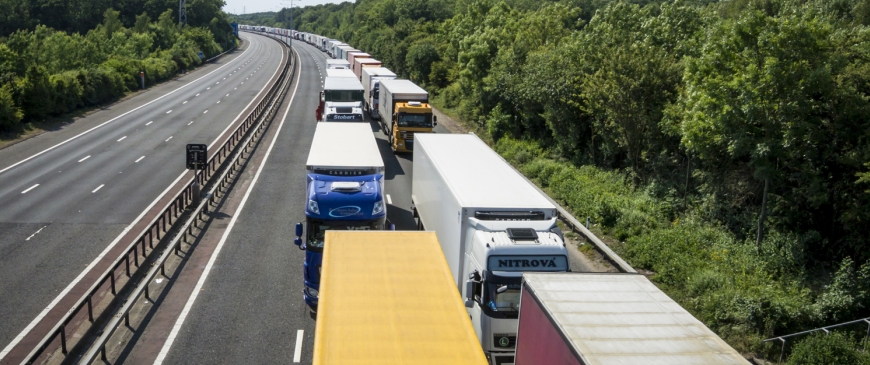
How can we stop the M20 from turning into a lorry park?
To avoid disruption to just-in-time production, and safeguard British manufacturing’s position, Theresa May wants the UK to remain within the EU’s regulatory union for goods, alongside a customs union. This would persist until new systems are in place that would allow the UK to run a tariff regime at the border. But Brexiters say this is unnecessary and that a simpler agreement, bolstered by new technology would allow goods trade to continue much as it does now.
Border systems are improving all the time, and it is reasonable to expect that what exists now will be much improved in 10 years’ time. But there are limits to what can be achieved in Britain’s trade with
the EU.
First, it is important to remember that trade between the UK and EU is currently “frictionless.” We also need to differentiate between different types of trade.
Roll-on roll-off trade—trucks drive onto ferries, cross the water and drive off the other side—currently accounts for the vast majority of total EU-UK trade. This takes place largely at Dover, the Eurotunnel and Holyhead, where other than a quick stop to display a passport and boarding information there is little in the way of friction. This differs from ports like Felixstowe, where the majority of freight arrives in sealed containers, which are deposited at the dock ready for a logistics company to retrieve them. There is much more scope for technological solutions at these ports, where time pressures are less.
It is reasonable to expect that paper-based import/export declarations will be phased out, via a combination of digital systems, number plate recognition and risk assessments. Checks could also be done away from the border.
Yet, at the roll-on roll-off ports even a small increase in time spent at the border could cause significant disruption. It is estimated that a three-minute check on each lorry at Dover would create a permanent 20 mile-long queue on the M20 through Kent. And, due to the cliffs in the area, there is little space to build new on-site facilities.
That said, customs and associated checks, such as rules of origin, only account for around one fifth of border checks—the lion’s share is down to regulatory issues. Perhaps the most arduous checks concern plant and animal health. If the UK is outside the EU’s Sanitary and Phytosanitary regime, all products of animal origin entering the EU must go via a veterinary border inspection post where, alongside document checks, up to 50 per cent of products are subject to physical inspections. Agreements, such as between the EU and New Zealand, can lead to a reduction in frequency of physical inspections, but the goods still need to pass through a veterinary border inspection post. That’s a problem for UK exporters: Calais and Eurotunnel, the primary route to market for British agricultural goods, are not veterinary border inspection posts. And Dunkirk, the nearest, is not big enough.
Other options include shipping via Rotterdam, but this would require putting products in containers—a completely different process. For goods sold on the basis of their freshness, such as Scottish langoustines, these delays and checks could prove disastrous. It is possible that existing “trusted trader” schemes could be expanded. This would allow exporters with a history of compliance, to self-certify that their animal products conform to EU standards, avoiding the need for physical inspections at a veterinary border inspection post. But that scheme would need to be recognised by the EU, and this currently does not seem likely.
Post-Brexit, these border issues can only be resolved through agreement with the EU.
Brexiteers are not wrong in thinking technology and new schemes could reduce friction at the border after Brexit, but they cannot remove it. Theresa May is right to acknowledge that the frictionless trade afforded by membership of the EU can only be maintained through full harmonisation with the relevant EU rules: a customs union, in all but name.
Unfortunately for her, unless she is prepared to relax her stated negotiation red lines—particularly on free movement of people—the EU is unlikely to accept that arrangement.
Sam Lowe is a senior research fellow at the Centre for European Reform.
